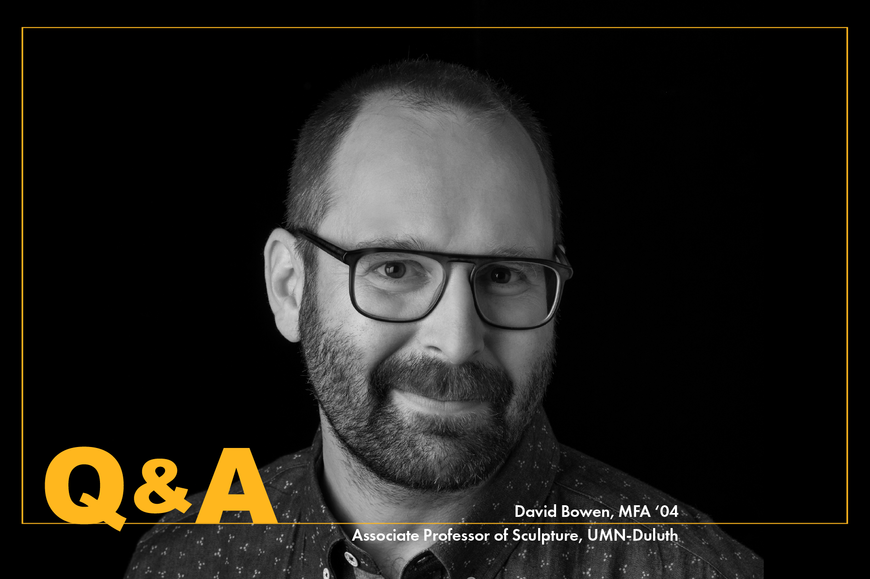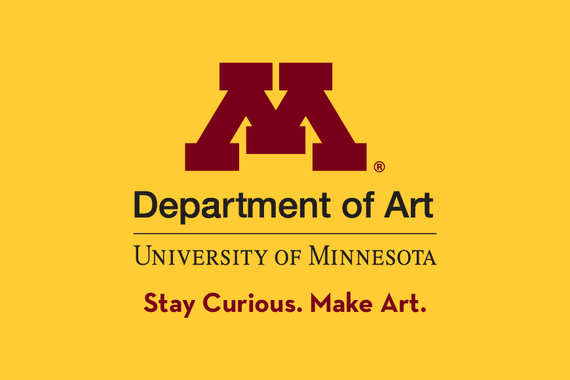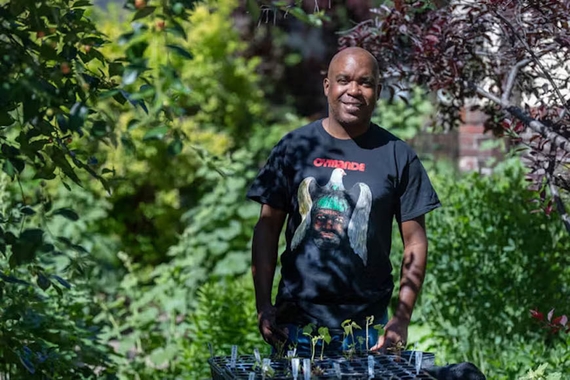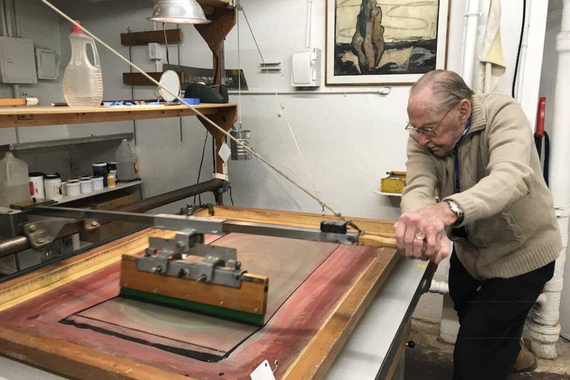Where Are They Now: Art Alum David Bowen
As the Department of Art prepares to celebrate the 20th anniversary of the Regis Center for Art, we've reached out to some Art alums to learn about their time here when Regis first opened and the careers they’ve created with their art education since.
Hi David! Your career as an artist has taken you all over the world, exhibiting throughout North America, South America, Europe, Russia, and Asia, as well as winning a wide variety of awards, grants, and fellowships. How do you describe your work, and how much is it related to the work you did here during your time at the U?
I studied Sculpture as an undergrad, but I came to the U of M to work with a kinetics professor, Guy Baldwin, and he introduced me to lots of cool, whimsical ways to use kinetics and analog systems and motors and things like that. I’ve heard my work described as data visualization, or even better data physicalization. I’m taking a data input and outputting it as a physical movement in response to stimuli or particular situations.
At the U, I studied a lot with Guy and learned a lot from him, but as grad students, you’re expected to work with somebody outside of the Art Department. At a huge research university like that, there are a lot of really smart people everywhere, and I think they’re really clever in having grad students seek out mentors that can apply to their thesis. I found a professor named William Durfee, who is actually still teaching there in the Mechanical Engineering Design program, and Will introduced me to these little programmable micro-controllers — which today we would call an arduino — basically a little computer that you can code to take in any number of inputs, like physical movement or light or sound or touch, and then you can program any number of outputs to be directly responsive to those inputs. These can have a lot of variability, which really upped the complexity of what I could do in terms of making things that respond in more dynamic or complex ways.
You completed your MFA here in 2004, shortly after the Regis Center for Art opened. What do you remember about the transition from the old building to the new one?
At that time, the grad students had their studios in South Stores, which is where the faculty studios are now, and they were great spaces. Our cohort was kind of embedded there in a shared space with so much energy; it was off-campus and kind of autonomous. Then my third year, they finished the Regis Center and wanted to move us over. I remember our cohort were kind of reluctant and a little curmudgeonly about it, but Regis ended up being a great space. It had way better light, the ceilings were better, it was more open, and it was nice being connected to the community more.
And then for my thesis, I decided I wanted to make a piece that relates to this new, great space that I get to use for one year. So I set up some sensors, by that time I was really steeped in the micro-controllers, so I set up some active infrared sensors at different locations throughout the new building and ran some wires to the gallery space to four different drawing arms that were in the space, responding to people as they moved through the space.
It’s a beautiful facility. Compared to where we were teaching, it was a million times better. The studio was a step up, but the plaster room, the foundry, the welding area, all the teaching places were in a very scary sort of building before that, this old abandoned sign factory. That really contributed to the teaching energy and I think that carries forward to the great things that are going on there now.
You now teach at the University of Minnesota-Duluth as an Associate Professor of Sculpture. How long have you been there, and how well have you been able to balance a teaching career and your own studio practice?
I’ve been here since 2005, so quite a while. It’s a comprehensive university, but faculty do have research as part of the expectation in addition to teaching. I’ve always taken that part of my job very seriously, and also there’s a lot of support, not only through the school providing me with a studio and a space to work as well as resources, funding, and access to smart people and cool equipment, but also Minnesota is an awesome place to be an artist. Outside of academia, there’s a really great funding flow here in terms of McKnight Fellowships and State Arts Board grants and exhibition opportunities like the MAEP at the Minneapolis Institute of Art. It’s really a great place to set up shop and either be an independent artist or be sort of 50/50 with that in academia.
My first job was at the University of Kansas, and that was a fine start to my tenure, but it was great to come back to Minnesota and be part of the community again and have the access amazing resources through academia and also through the state.
I’ve always been a proponent of active researchers in terms of practitioners bring a lot to the classroom. It really works well in terms of being able to talk the talk.
What advice do you give to students who want to major in Art but aren't sure how that might help them make a living? What advice do you have about pursuing a career as a professional artist?
There are no guarantees. I have mechanical engineering students — I teach a Robotics class, so I have a lot of overlap between engineering and art students — and they’re all set up with a job ready to go by the time they graduate, doing some kind of IT work down in a basement punching away on a computer. I guess it’s different with an art degree. I think one of the things I deliver to those students is creative problem-solving; they really like my course as an engineering course.
As far as the art students, there are a lot of different directions people go. I’ve had students who have gone on to academia to get their MFA and are now teaching. I have students who are doing creative work within industry. And I have students that are not doing art at all, they’re pursuing other things. But I feel like the things that I gave them through creative problem-solving are enriching them wherever they’re at.
There is some overlap between what I do and with scientists, thinking about data physicalization, me collecting data using buoys or wind or what have you to make a physical output. I’ve always thought that the scientist’s job is to answer the question, and our job as artists is to ask the question.
Is there anything you wish you could go back in time and tell yourself as a student at the U?
Everything is gonna work out, one way or another (laughing). You know, just don’t take it so seriously, maybe. Try to have fun and get the most out of what you’re doing. There were certain things that I did right there. But it’s a scary thing, getting your MFA. But there’s so much support there, so just take advantage of it. Get what you can out of the experience, and as much as you can, be in that studio and do your thing.
To see more of his work, visit David Bowen's website or follow him on Instagram @davidbowenart. You can also read a profile of the artist on MPLSART.COM, written by Communications Specialist Russ White.
Learn more about the Regis Center for Art 20th Anniversary Celebration.
Banner photo by Rik Sferra, courtesy of MCAD.



